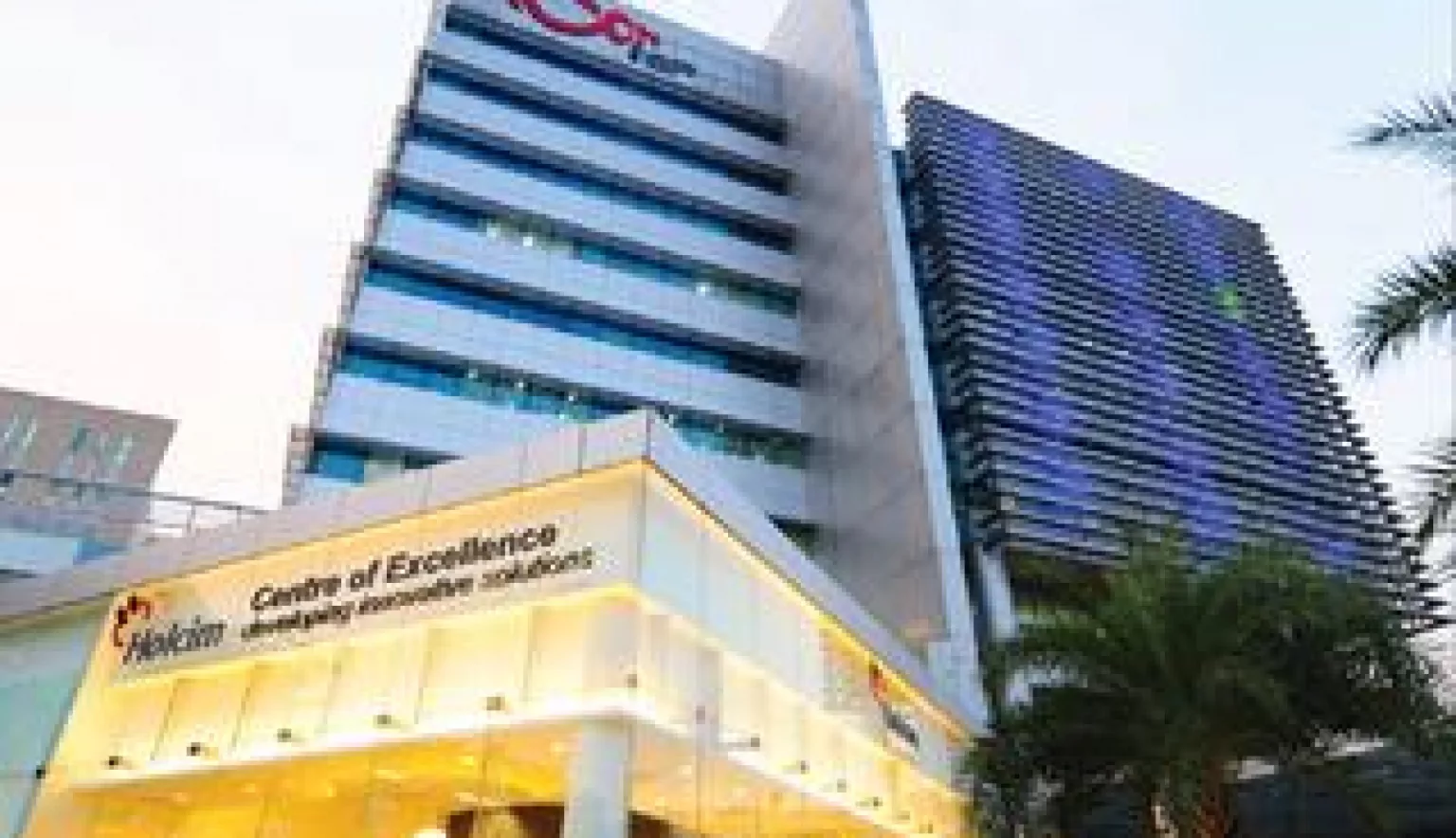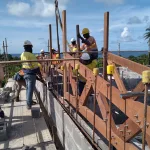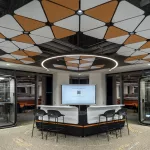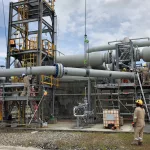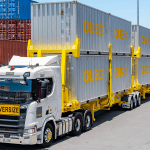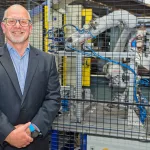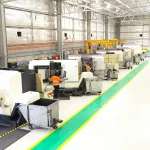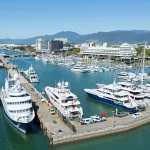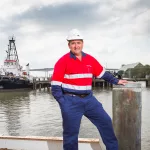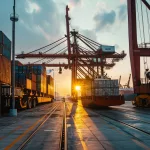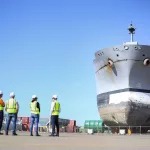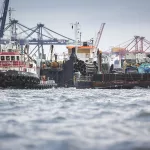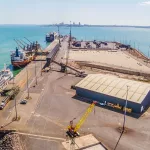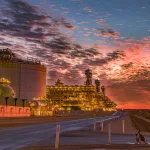Holcim Singapore is one of the world’s leading suppliers of cement and aggregates. It is also a leader in sustainability.
RAISING THE BAR IN SUSTAINABILITY
The past six years have been very good to Holcim Singapore and Dr Sujit Ghosh. Its market share has grown to almost double what it was in 2007 when he took over the role of CEO and Holcim’s brand image has been “strengthened dramatically”. “When I took over we had low market share and the brand was relatively unknown,” he says.
There are several factors behind its success. A major one is an unrelenting focus on sustainability – Holcim’s vision to provide “foundations for society’s future and commitment to sustainable development”, continuously seeking “ways to promote sustainable construction through innovation”.
It’s a hell of a vision. And for Dr Ghosh, it is much more than mere window-dressing.
He believes that by adopting sustainable practices, companies “can gain competitive edge, increase their market share, and boost shareholder value”.
What’s more, the “growing demand for ‘green’ products has created major new markets,” he says.
Before joining Holcim, Dr Ghosh worked with Lafarge Asia-Pacific as Regional technical Director and had a role in several other major multinational corporations.
Holcim Singapore is a subsidiary of the Swiss-headquartered Holcim group.
“Our sustainability efforts are central to our core strategy,” he says. “Apart from focusing on business growth, we also put a strong commitment to sustainability development. Typically, companies have lofty visions and Holcim also has its own lofty vision – to be not only a profitable company but also take the interests of stakeholders at large into account. we’ve been talking the talk and walking the walk, being named the leader in the Dow Jones sustainability index because of our commitments on sustainability and with co2 emissions control.”
Last year Dr Ghosh attended an event run by Harvard Business School called “innovating for sustainability” in Hampshire, England. Something like 40 executives from 24 countries and many industries attended and discussed items like how to avoid trade-off s between short term financial and non financial performance improvements.
One of the many outcomes was the conclusion that investors of today are highly sophisticated, well informed, and highly demanding.
Not only do they care about immediate financial performance, but they are looking for business sustainability.
This of course was not news for Holcim.
“We’ve long been aware of the need to create value for shareholders in a way that creates value for other stakeholders as well,” Dr Ghosh explains.
“But we are about more than simply saying sustainability is good business because it reduces waste or something like that or creating products that are green. it is much far-reaching and takes a long time for companies to develop and implement, and requires creativity.”
And nowhere is sustainability more important than Singapore – partly because of its lack of natural resources and growing demand for green buildings.
“We look for win-win solutions that offer immediate value and provide a commercial advantage,” says Dr Ghosh. “Asia is not going to decrease its demand to build, so we need to figure out how we can do more with less.”
Last year Holcim opened a new centre of Excellence with support from Singapore’s Economic Development Board with the aim of taking products at the research and development stage and turning them into commercial products saleable in Asian market.
One such product is an eco-friendly high strength concrete that can decrease the amount of material needed for building projects. “We are looking for innovations that reduce the carbon-footprint and make Singapore greener but also offer affordable and value-added alternatives,” Dr Ghosh says. “Singapore is resource-hungry and is has begun to embrace the concept of ‘reduce, recycle and reuse’.
“We also have a Holcim Foundation for sustainable construction which has a different board of directors, but still funded by the Holcim group. the Foundation promotes sustainable construction around the world by running competitions around the world.”
The Building and Construction authority (BCA), which regulates Singapore’s construction industry, has embraced Holcim’s approach and has even gone as far as far to amend building codes, while encouraging the use of materials that reduce the carbon footprint of buildings.
“With the innovative ultra high-strength, high-performance concrete there are many benefits,” says Dr Ghosh who explains it, “saves resources because you can construct with significantly lower volumes of concrete.”
Holcim Supercrete HS has a very low co2 footprint, low shrinkage, high durability and is easily placeble without vibration as it is self-levelling.
Compared to normal high-strength concretes, its usage has the potential to lower concrete consumption by up to 50 percent.
“We launched Supercrete HS with the knowledge that Singapore is a country that has a lot of high-rise buildings and has high per capita cement consumption. It is about building more with less. You can still build the same height building, the same size, but if you are using a higher strength concrete you are going to consume a lot less and that is important in a country that is so reliant on imports. And the idea stuck well in the minds of the authorities here. We are supplying some very high strength concrete to high rise buildings in downtown Singapore which are going to be using less concrete, cement and aggregate. The imbedded footprint in those buildings is clearly going to be less because you are using fewer materials. That is an aspect of sustainability.
“Beyond that, we have launched other solutions, productivity enhancing solutions – one called Easecrete. It reduces the man-hours compared to that required with conventional concrete. All you have to do is take it to the site and pour it. And it is important in Singapore because of the drive to reduce the reliance on foreign workers.”
Eco-efficiency is at the core of Holcim’s business and it is making a real difference by promoting sustainable alternatives and greener production methods for cement, concrete and other building materials.
It is no stranger to using recycled materials in its products, for instance, and, prompted by the sand crisis, started using waste collected from Singapore’s ship-repair industry in the making of its concrete as far back as 2007.
“We are excited by the future,” says Dr Ghosh. “I’m an optimist and believe we all should be. I’m hopeful we will be able to continue on our journey towards sustainability and continue aligning ourselves with the broader sovereign policies of places we operate. I’m hopeful on that.
“In the future, construction will be moving underground and we are excited as to how we can play a role in that. Singapore is crowded and there is a move to move its infrastructure underground which will open a whole array of opportunities.
“The future looks reasonably bright – we are focusing not just on profit but running in the right way.”
Holcim Singapore was established with the merger of National Cement and Eastern Concrete in 2004 and further expanded in 2010 with the amalgamation with JCL Building Materials (a wholly-owned subsidiary of Jurong Cement Limited).
To learn more visit www.holcim.sg

